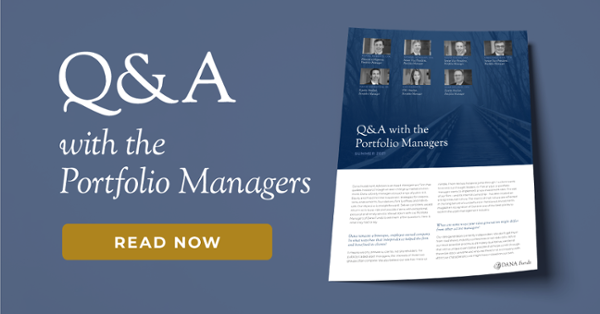Why Investment Style Boxes Are Wrong Question to Ponder
With growth stocks on a historical run of outperforming value, many allocators are wondering if mean reversion is due and are questioning their allocations to both style boxes. But growth or value may be the wrong question to ask.
As Dana portfolio managers explained in a recent Q&A on the ways active managers can differentiate their strategies, core strategies may provide optimal exposure. The Q&A also runs through a classic example of the perils of overpaying for growth, and touches on a less discussed benefit of core strategies: tax efficiency. As our portfolio managers explain:
“The optimal stocks to own are those with attributes of both growth and value. We seek stocks whose revenue and cash flow stair step upwards over time … but where the investor hasn’t overpaid for them. We invest in companies that are growing, but if you pay too much for that growth, the stock could still lose money over the long term. The long-term performance of some technology companies since the dotcom bubble serve as a classic example. One computer chip company traded at 200 times earnings in the early 2000s. From 2000 to 2020, it grew earnings 10 or 20-fold, depending on how you measure its base…but the stock didn’t make any money over that time horizon. On the other end of the spectrum, we don’t want to own a value trap that trades at a low valuation, but whose growth prospects are dim.“Another reason advisors should prefer a core strategy is its tax efficiency. If the client holds separate value and growth strategies, they could incur capital gains taxes when a value manager sells a stock because it leaves the value index, yet the growth manager turns around and buys the same stock now that it’s in a growth index.”
To learn more about why core strategies are particularly relevant in the current market environment, read our previous blog Style Boxes Pose Pitfalls in Post-Pandemic Investment Landscape on the issue. To find out more about Dana’s unique investment process underpinning its core strategies, download the full Q&A from our portfolio managers below.



